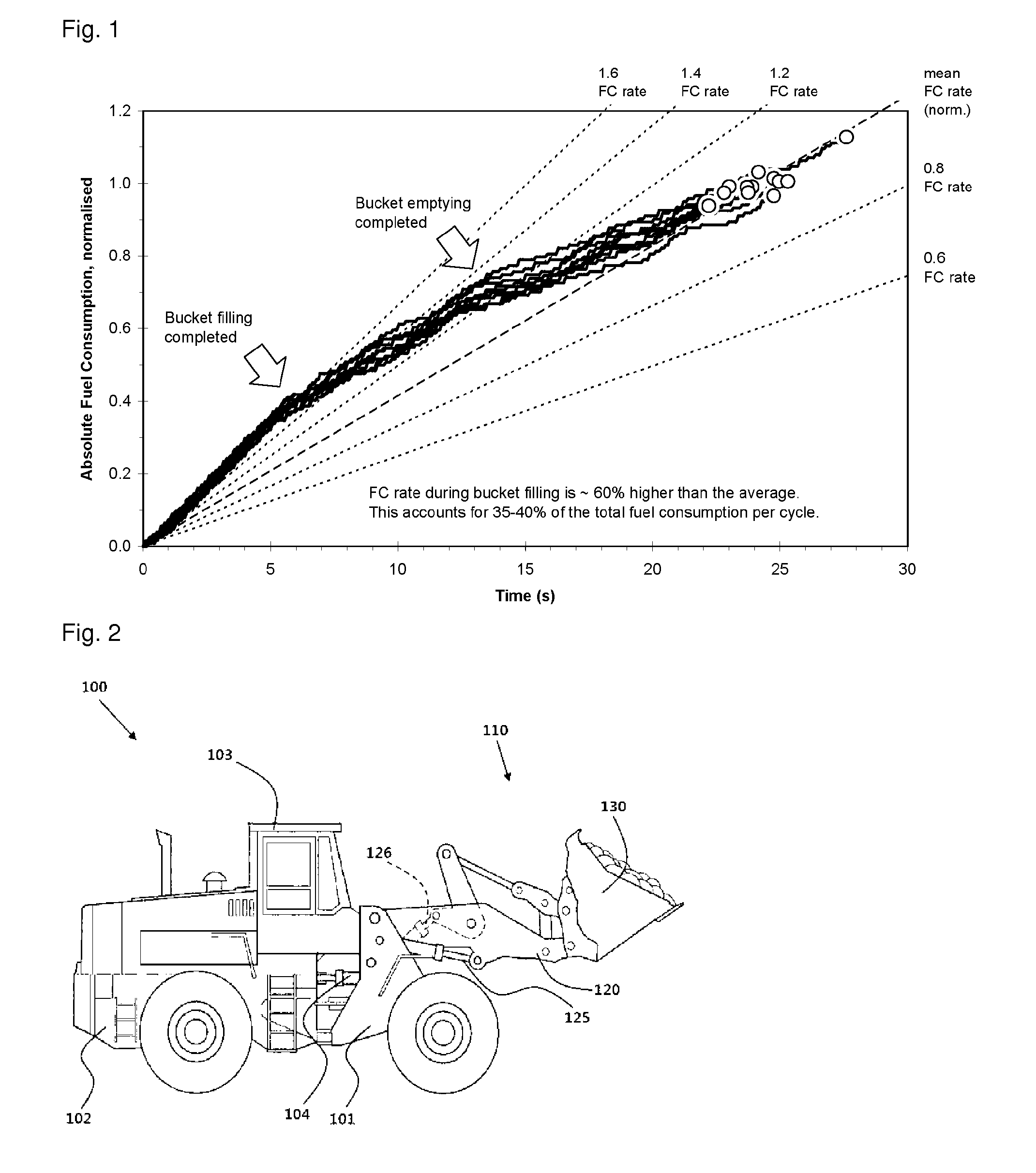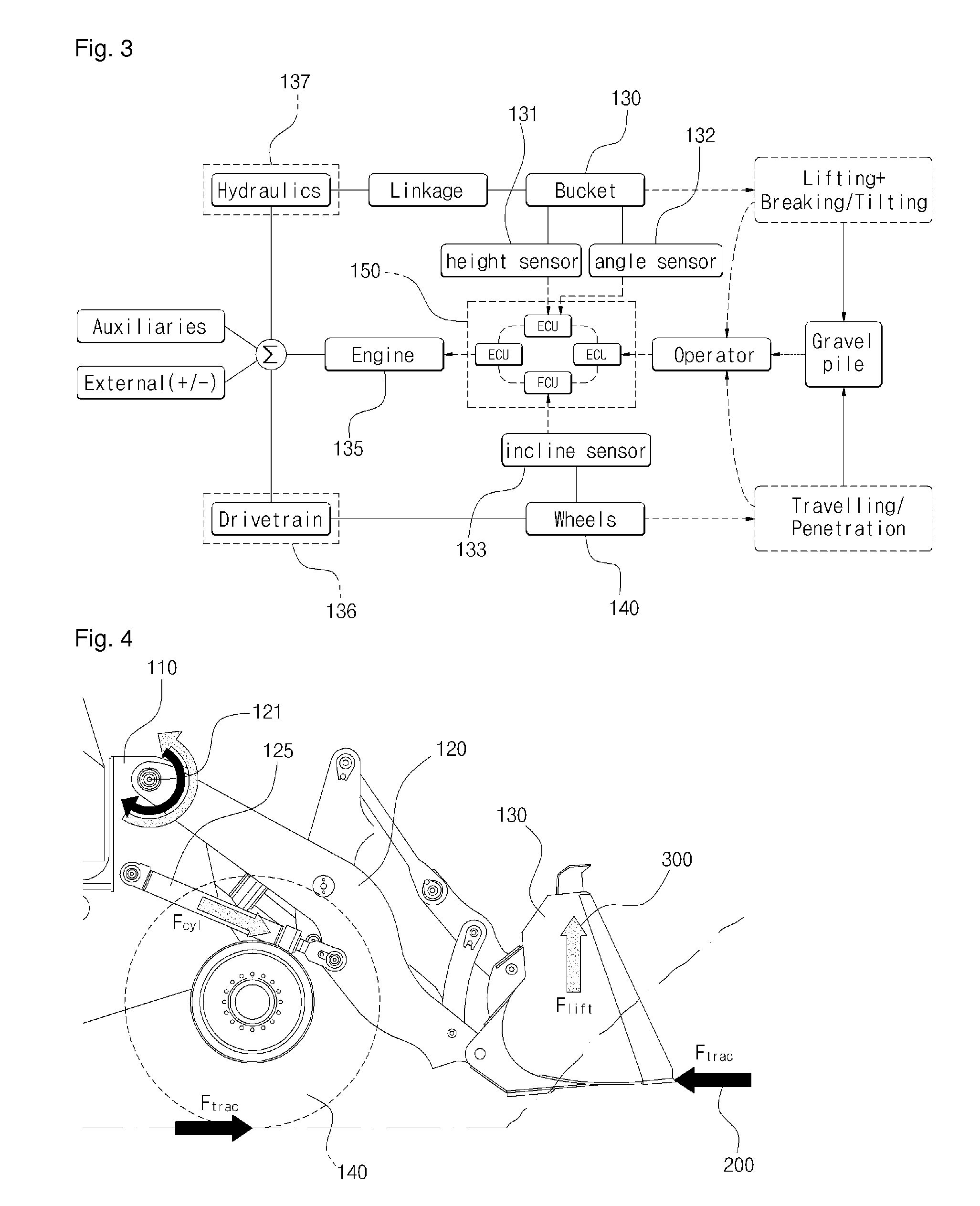Method for controlling a working machine
a technology for working machines and electronic control units, applied in soil-shifting machines/dredgers, computations using stochastic pulse trains, non-denominational number representations, etc., can solve the problems of reducing the remaining power usable for the hydraulic system, the general challenge the traction system by controlling the gas pedal and hydraulic levers, and the difficulty of balancing the hydraulic system. , to achieve the effect of reducing the amount of fuel consumed
- Summary
- Abstract
- Description
- Claims
- Application Information
AI Technical Summary
Benefits of technology
Problems solved by technology
Method used
Image
Examples
Embodiment Construction
[0046]The invention will now be described in detail with reference to the preferred embodiments of the invention and the drawings. The embodiments of the invention with further developments described in the following are to be regarded only as examples and are in no way to limit the scope of the protection provided by the patent claims.
[0047]The invention relates to a method, an electronic control unit, a vehicle control system, and a working machine for controlling a working machine having a bucket as a work implement by which a lifting force can be exerted on an object such as a gravel pile, and at least one ground engaging element by which a traction force can be exerted on the same object, wherein the lifting force is an upward-directed lifting force experienced by the object. The power source of the working machine will be exemplified in the following by an internal combustion engine.
[0048]The electronic control unit, the vehicle control system, and the working machine are adap...
PUM
 Login to View More
Login to View More Abstract
Description
Claims
Application Information
 Login to View More
Login to View More - R&D
- Intellectual Property
- Life Sciences
- Materials
- Tech Scout
- Unparalleled Data Quality
- Higher Quality Content
- 60% Fewer Hallucinations
Browse by: Latest US Patents, China's latest patents, Technical Efficacy Thesaurus, Application Domain, Technology Topic, Popular Technical Reports.
© 2025 PatSnap. All rights reserved.Legal|Privacy policy|Modern Slavery Act Transparency Statement|Sitemap|About US| Contact US: help@patsnap.com



